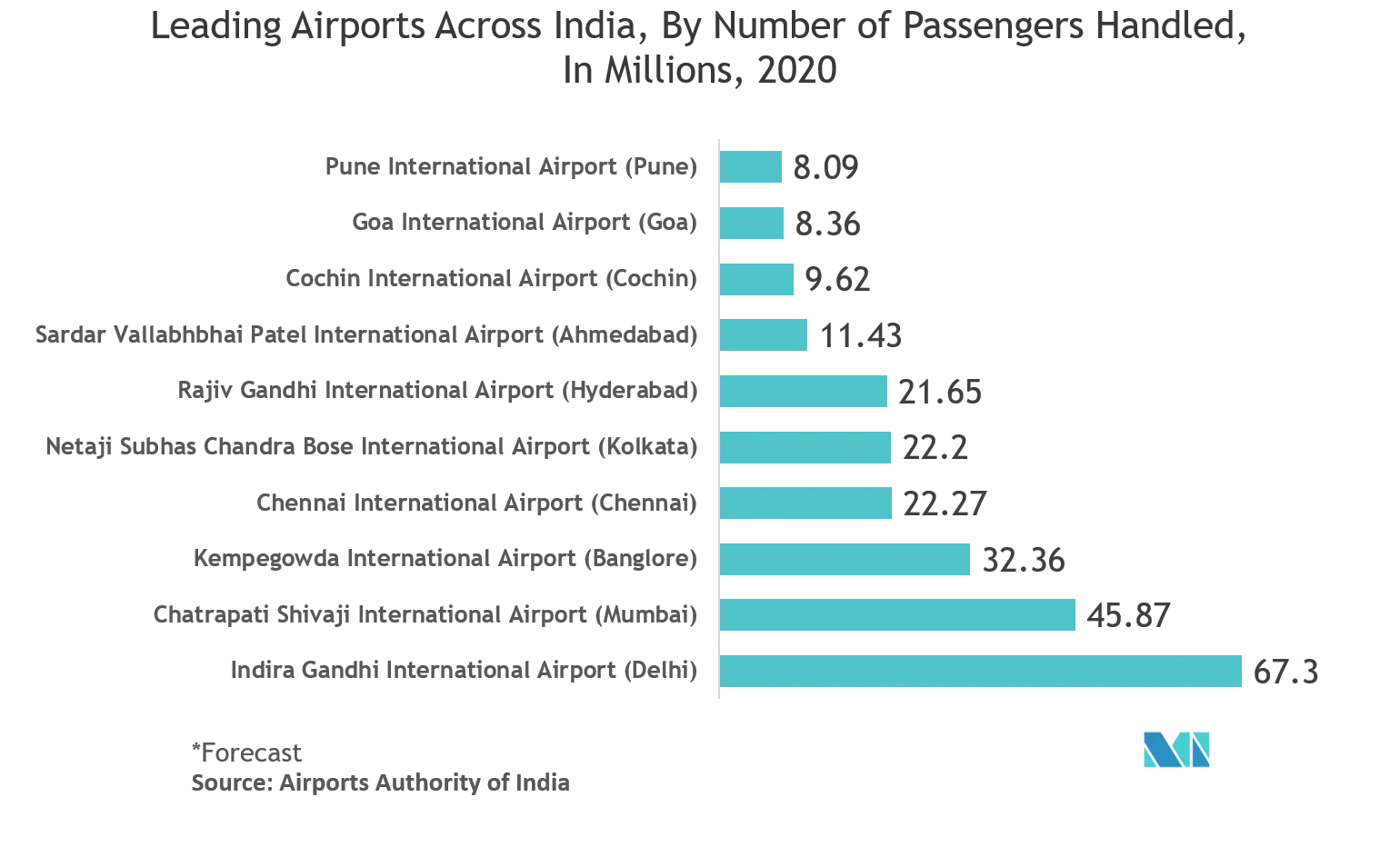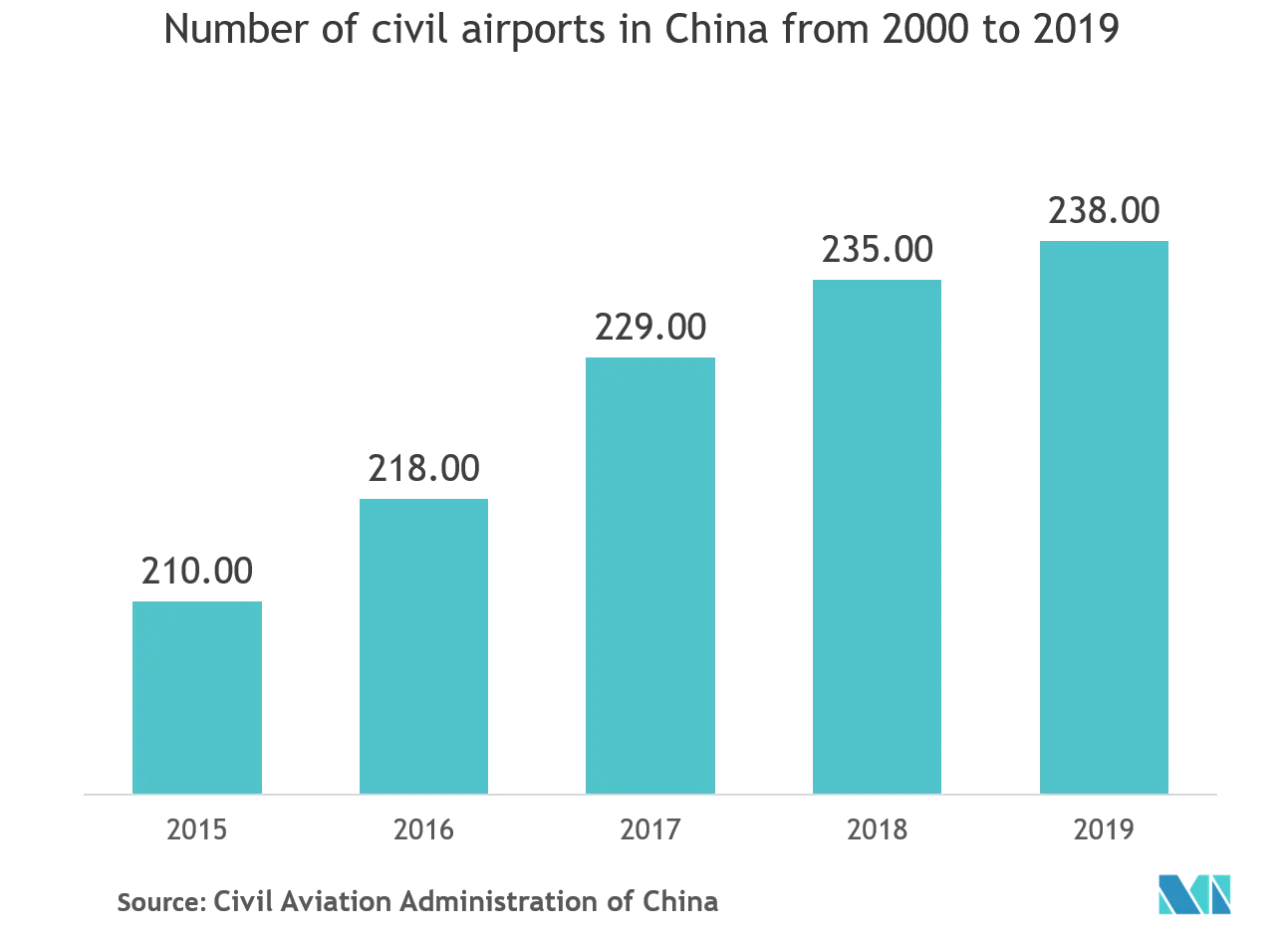Market Trends of Asia-Pacific Security Screening Industry
This section covers the major market trends shaping the APAC Security Screening Market according to our research experts:
Airports are expected to Hold SIgnificant Share
- The global aviation industry is observing a significant influx of passengers, and commercial air traffic is on the rise, owing to which airports are increasingly adopting innovative security screening solutions. According to IATA, the revenue of commercial airlines, globally, stood at USD 812 billion in 2018, and it is expected to reach USD 872 billion by 2020.
- In addition, airports are increasingly adopting screening technologies to speed up the boarding process and reduce travel and transport time consumed, without compromising on security. For instance, the Indian government directed 84 airports across the country to install body scanners by March 2020, which may replace the existing door frame metal detectors and handheld scanners.
- Moreover, the government has initiated several major infrastructure projects, including new mega ports, airports, and metro systems, and the development of multiple smart cities across the country. The rapid growth in the hospitality sector, residential and commercial structures, railways, and roadways, coupled with a greater presence of multinational companies (MNCs), has been the primary factor driving the market demand for security screening. In January 2019, the Ministry of Civil Aviation (MoCA) in its 'Vision 2040 for the Civil Aviation Industry in India' report stated that 80-90 new airports are likely to be developed in India under the 'NextGen Airports for Bharat (NABH) Nirman' scheme within the next 20 years. This involves the deployment of certain critical infrastructures throughout the forecast period.
- Furthermore, there is a threat of terrorist attacks, due to which security standards are set by international authorities, including IATA, ICAO, and ACI. This has resulted in the increased adoption of screening systems at airports. For instance, Smiths Detection, a provider of threat detection systems, supplies innovative solutions for screening and search functions in Tokyo’s Narita International Airport. Narita installed 13 of Smiths Detection’s Eqo portals, following a national directive from the Japan Civil Aviation Bureau (JCAB), to upgrade check-point security.

China to Witness Significant Growth
- China is a major hub for air travel, globally, with almost 238 civil airports in the country in 2019. According to the 13th Five Year Plan (2016-2020) of the Civil Aviation Administration of China (CAAC), the country is anticipated to continue new airport construction, including the Beijing Daxing International Airport, which is one of the significant airports under construction and part of its 44 new airport construction projects, and Chengdu Tianfu Airport, which may be the second-largest new airport project in China.
- This gives several companies a market opportunity to sell their airport security equipment and services. Previously, most infrastructures in China conducted its inspection operations in-house. However, with the increasing acceptance of the China Compulsory Certification (CCC), greater emphasis is being placed on the need for strict regulatory standards, which has led to an increase in outsourcing activities in China, due to cost benefits. This increasing trend of outsourcing is expected to further fuel the market over the forecast period.
- According to the Civil Aviation Administration, airports in China are further planning to adopt technologies, such as millimetre-wave imaging, which can make it faster for passengers to pass through airport security. Security scanners can detect objects hidden under clothing, including non-metallic objects, and can show their shape, size, and position.
- Adding to the scenario, in November 2019, Smiths Detection announced its partnership with Chengdu Shuangliu International Airport to trial its smart security checkpoint for the first time in China.
- The company provides an integrated system that combines advanced X-ray inspection screening and an automated tray return system. The smart security checkpoint provides heightened security, alongside smoother passenger experience and improved operational efficiency.


